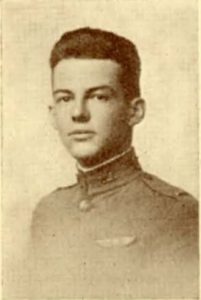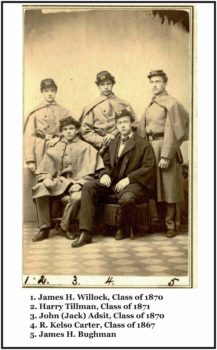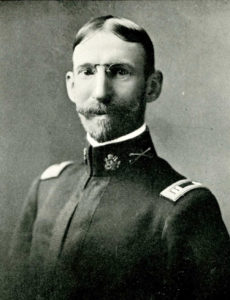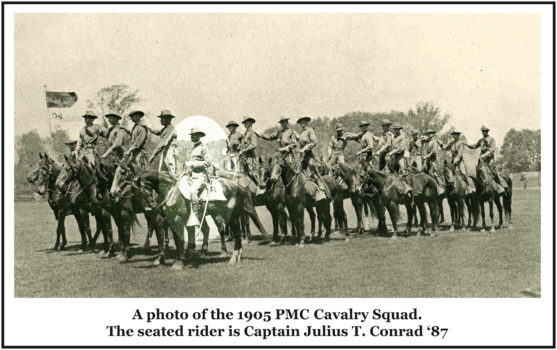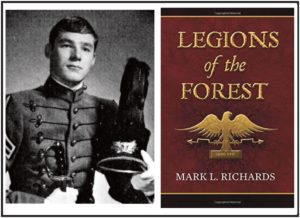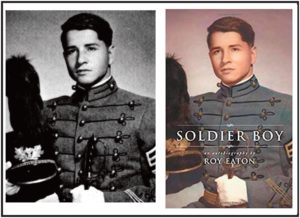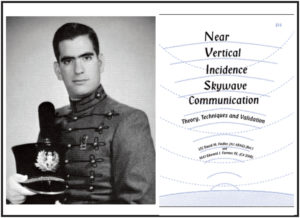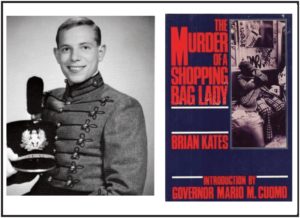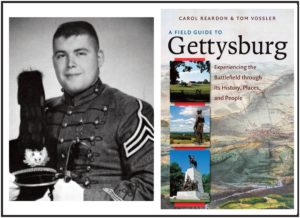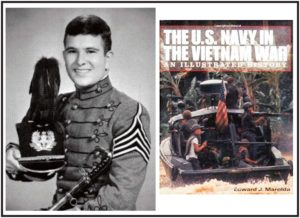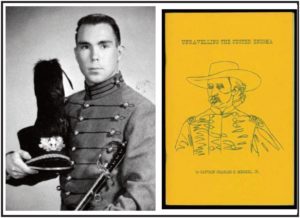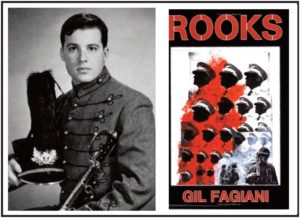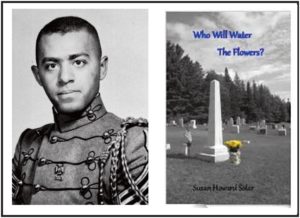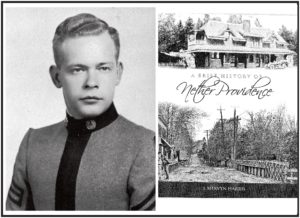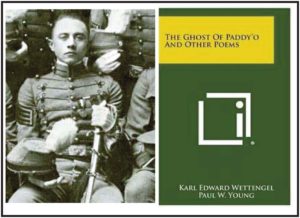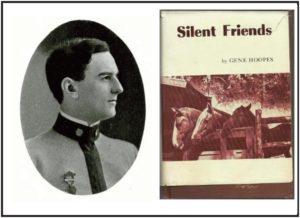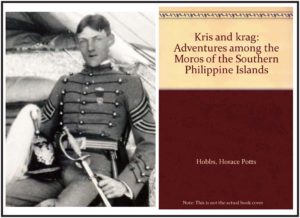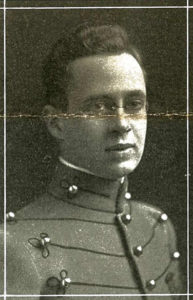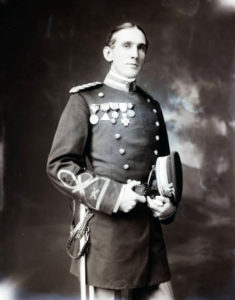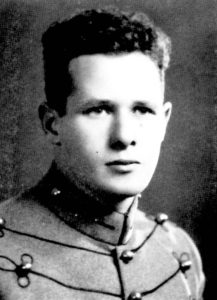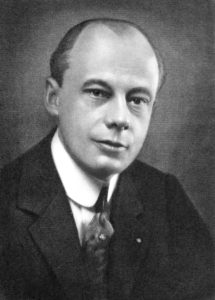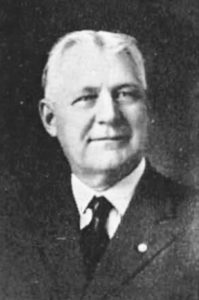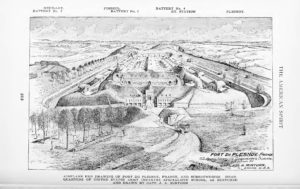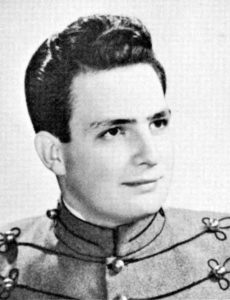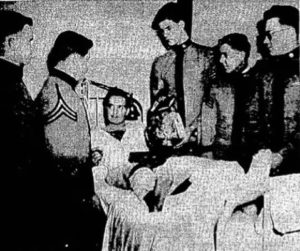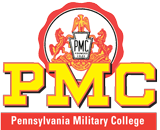In the fall of 1919, just 16 years after the Wright brothers made the first powered flight, PMC became what was reported at the time to be “the first college in the United States to include flying in its curriculum.”
Lt. Theodore Hyatt Cowee ’20, of the United States Air Service, the grandson of PMC founder Theodore Hyatt, was the instructor for program, which consisted of eight flying lessons in a Curtis biplane and 12 ground lessons. Twenty students enrolled, and training took place on the field opposite Springhaven Country Club in Wallingford, about two miles north of the campus.
The following year, the course was under the direction of G. Sumner Ireland, of Curtis Eastern Airplane Corporation. Although 17 Cadets wanted to participate, most were unable to obtain parental consent and the program was grounded.
Records are sketchy, but it appears that the course was not revived until 1939, with the Civil Aeronautics Authority providing both ground schooling and flight training at Philadelphia’s S. Davis Wilson Airport, later to become Philadelphia International Airport. Students who successfully completed 72 classroom hours and flight training received a pilot’s license.
In 1955, PMC became the first military college in the U.S. to have a Civil Air Patrol program. According to the Alumni Bulletin “more than 100 cadets have enrolled in the program ….” The instructors were Air Force Reserve officers. Studies included aerodynamics, navigation, meteorology and flight training. By 1963, first classmen able to pass a flight physical qualified for the Army ROTC Flight Training Program conducted at the Bridgeport Airport in New Jersey. After 35 hours of instruction, which included soloing, cadets received the ROTC pilot’s badge and could apply to the Federal Aviation Administration for a private pilot’s license.
In 1967, the Atlantic Aviation Corporation awarded the Atlantic Aviation Trophy to the first classman selected the outstanding student pilot in the ROTC flight training program. After 1st Lt. William J. Stephenson (’63) was killed by enemy ground fire while flying a Sioux observation helicopter in Viet Nam in 1966, the award was renamed in his honor. Three years later, criteria for the medal was changed, awarding it to the first classman in the program who displayed the most sincere and dedicated desire for a career as an Army aviation officer. In 1972, the year the Corps of Cadets was disbanded, the award was once again tendered to the most outstanding student in the program.
When PMC started its aviation program, it was leading the way into the future, and the move made headlines nationwide. After all, the Ironwood (Mich.) Daily Globe reported in its coverage of the cutting-edge course, “In a short time, aerial passenger service will be demanding a great number of experienced fliers who will be needed in the coast-to-coast service … composed of large, comfortable planes capable of carrying twenty-five passengers….”
PMC Aviators
| Name | Year | Unit |
| Elliot Durand, Jr. | 1903 | 24th Aero Squadron |
| Frank B. Smith | 1910 | Aviation Section, Signal Reserve Corps |
| John Burns | 1912 | Aviator USMC |
| Clarence Paige | 1916 | Aviation Division Signal Corps Reserves |
| Theodore H. Cowee | 1920 | Aviation Section, Signal Reserve Corps |
| Hugh McCaffery | 1924 | 31st Bomber Squadron 7th Bombardment Group |
| Joseph V. Carels | 1934 | 35th Fighter Squadron 8th Fighter Group |
| S. Ellsworth Duff | 1938 | Army Air Corps |
| Robert Moyer | 1939 | Air Force Cryptologic Depot, USAF |
| George Kassab | 1939 | 530th Bomb Squadron, 380th Bomb Group B-24 |
| J. Gerald Lynch | 1939 | 71st Bombardment Squadron Army Air Corps |
| Sidney Rosberger | 1939 | 338th Bomb Squadron, 96th Bomb Group, 8th Air Force |
| William F. Spang | 1939 | Marine Scout Bombin Sqadron 132 |
| Myron B. Arronson | 1940 | 653rd Bomb Squad, 35th Bomb Group |
| Thomas Anderson | 1942 | 26th Infantry Regiment, 1st Infantry Division |
| Silvio Dignazio | 1942 | 491st Bombardment Group (Heavy), 8th Air Force |
| Lewis Brunner | 1943 | 827 Bomb Squadron, 484 Bombardment Wing |
| Benjamin Kimlau | 1942 | 380th Bomb Group, 5th Air Force |
| Art Riley | 1943 | Air Wing |
| Bruce Hoffman | 1946 | Patrol Squadron 21 (Navy P4M) |
| Richard E. LaBrode | 1951 | 162nd Assault Helicopter Company, 11th Combat Aviation Battalion |
| Robert Azzolin | 1954 | Avation Section, 2ND Cavalry Regiment |
| John Adams | 1955 | 11th Air Assaault Division |
| David Johnson | 1955 | 11th Aviation Battalion |
| Joseph Mossman | 1961 | VA-72, CVW-7 Task Force 77, 7th Fleet |
| Joseph Newsome | 1961 | 145th Aviation Battalion, 1st Aviation Brigade, USARV |
| Edward Underwood | 1961 | Air Cavalry Troop, 11th Armored Cavalry Regiment, USARV |
| Richard Handly, Jr. | 1962 | 18th Aviation Brigade |
| Martin Post | 1962 | Avionics Systems Engineer US Army Avionics Lab |
| George Horn | 1962 | 118th Aviation Company |
| Dan Madish | 1962 | 604th Transportation Company Pleiku |
| Rex Newman | 1962 | 26th Bomb Squadron, 668th Bomb Squadron USAF |
| David Cole | 1962 | Rex: all Army aviators (deceased) |
| Paul Sykes | 1962 | Helicopters (4/24/2005 deceased) |
| Albert Hansen III | 1963 | Army Helicopter School (Hearing loss prevented graduation) |
| George D. Alloway | 1963 | 146th Aviation Company |
| Kenneth Chien | 1963 | 118th Assault Helicoper Company |
| Kenneth Johnson | 1963 | 118th Aviation Co. (AML), 145th Aviation Battalion |
| Larry Liss | 1963 | 162nd Assault Helicopter Company Aviation Detachment, II Field Force, USARV |
| David C. Sapp | 1963 | 220th Aviation Company, 1st Aviation Brigade |
| William J. Stephenson | 1963 | 1st Squadron, 9th Cavalry Regiment, 1st Cavalry Divison |
| Richard Zeltner | 1963 | 282nd Assault Helicopter Company |
| John F. Giblin, Jr | 1963 | unkown |
| William G. Miller | 1963 | unkown |
| Peter Vanderland | 1964 | 1st Aviation Battalion, 1st Infantry Division |
| Charles Weber | 1964 | 13th Combat Aviation Battalion, 1st Aviation Brigade, USARV |
| Jim Delay | 1964 | jdelay@mindspring.com |
| William Allanach | 1965 | 229th Aviation Battalion (Assault Helicopter) 1st Cavalry Division |
| Anthony Coggeshall | 1965 | 116th Assault Helicopter Company, 269th Aviation Battalion USARV |
| John Grant | 1965 | VMAW Pilot |
| Evans Kayser | 1965 | 3rd Squadron, 5th Cavalry, 9th Infantry Division, USARV |
| Michael McCloy | 1965 | 219th Recon Airplane Company |
| Clayton Rash | 1965 | 229th Aviation Battalion (Assault Helicopter) 1st Cavalry Division |
| David Rittman | 1965 | 229th Aviation Battalion (Assault Helicopter) 1st Cavalry Division |
| Frederick Scheffler | 1965 | 11th Armored Cavalry Regiment (Blackhorse) |
| Richard Taus | 1965 | 307th Combat Aviation Battalion, 1st Aviation Brigade |
| Bill Whittaker | 1965 | unkown |
| Richard Berkey | 1966 | 388nd Aircraft Maintenance Transportation Company (DS) |
| Edwin Carpenter | 1966 | 17th Assault Helicopter Company |
| Jeffrey Travers | 1966 | Mission Pilot, Connecticut Wing U.S. Air Force Auxiliary |
| S. Douglas Eckard | 1967 | 117th Air Assault Helicopter Company, 14th Combaat Aviation Battalon |
| David B. Usechak | 1967 | Avionics Systems Engineer US Army Avionics Lab |
| Charles Merkel, Jr. | 1967 | Casper Platoon, 173d Airborne Brigade |
| Hayden Wilbur | 1967 | unkown |
| Joseph Gross | 1968 | 176th Assault Helicopter Company, Americal Divison |
| Charles W. Dievendorf | 1968 | 3rd Squadron, 17th Air Cavalry |
| Steven Raho | 1968 | 128th Avn Co, 52nd Avn Bn, 17th Avn Group |
| David Fiedler | 1968 | Avionics Systems Engineer, U S Army Avionics Lab |
| James Pearson | 1968 | 98th Medical Company (Air Ambulance) |
| Robert Aldrich | 1969 | Marine Medium Helicoper Squadron 165, 7th Fleet |
| Robert Huntley | 1971 | 4th Squadron, 9th Cavalry, 6th Air Cav Combat Brigade |
| Glen Dower | 1973 | Co A, 8th Combat Aviation BN, 8th Infantry Division |
| Jeff Fox | 1973 | 356th Tactical Fighter Squadron “Desert Demons” (deceased) |
CLICK HERE To Suggest Changes or Additions
